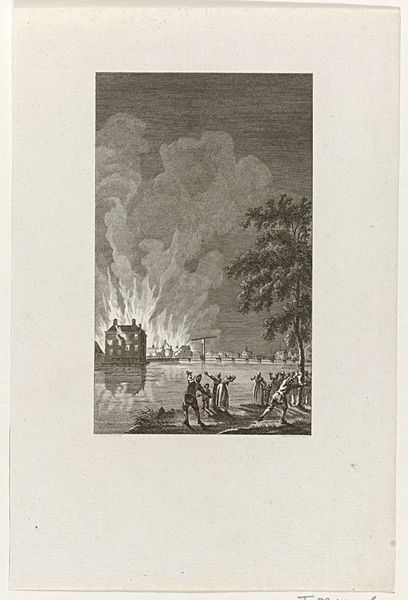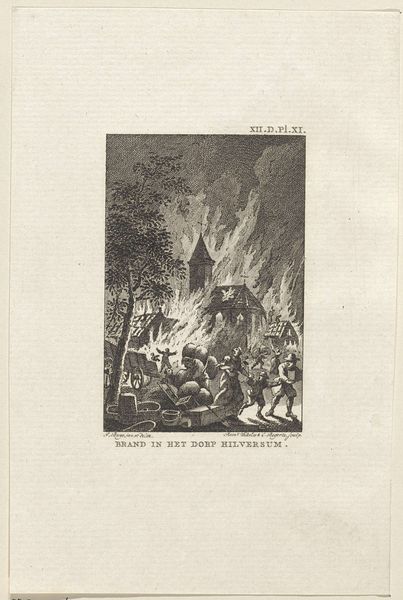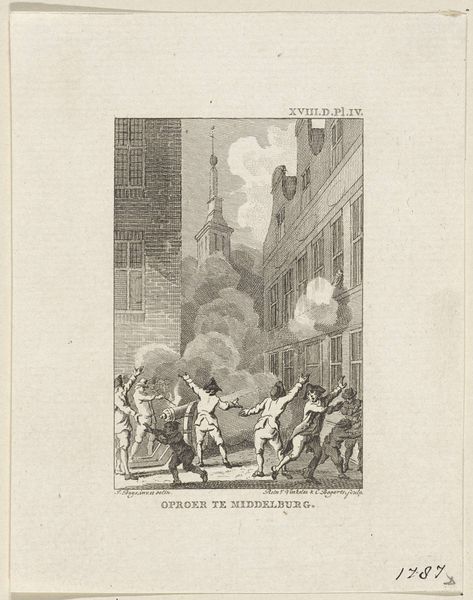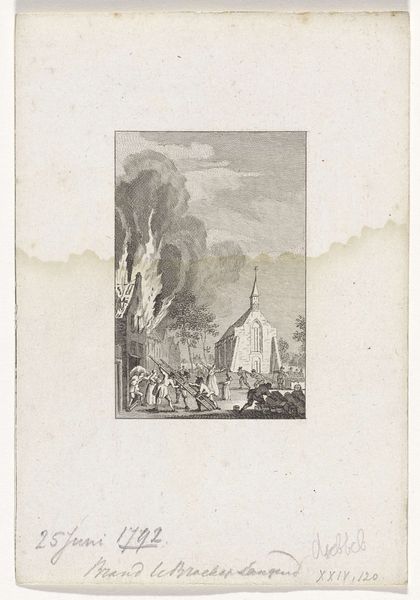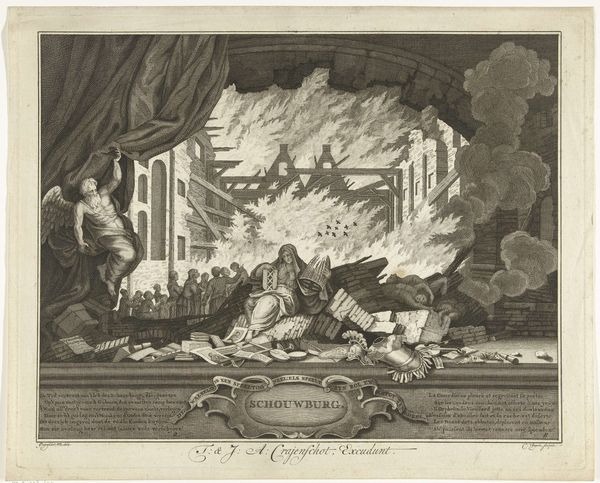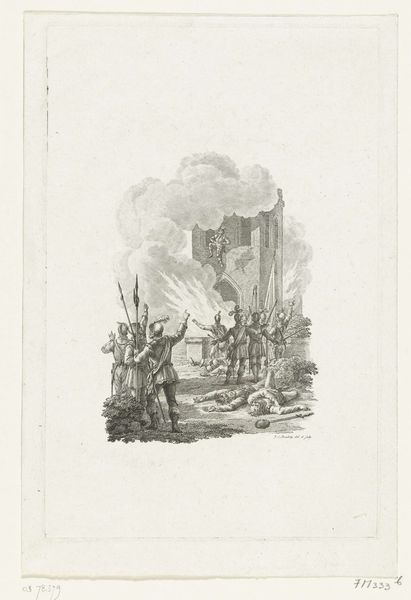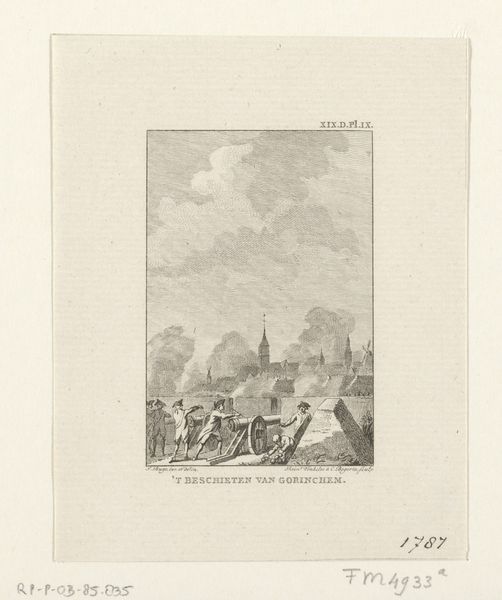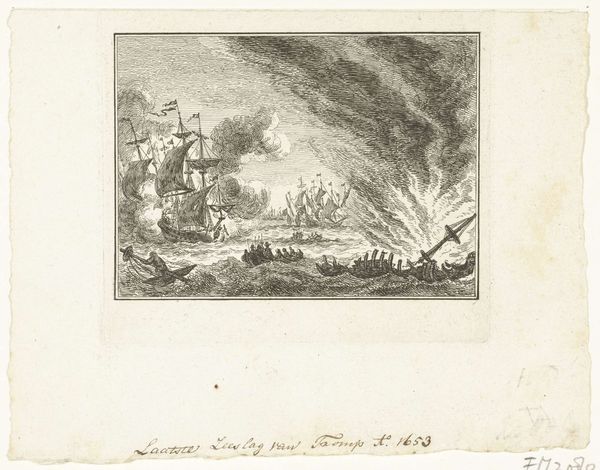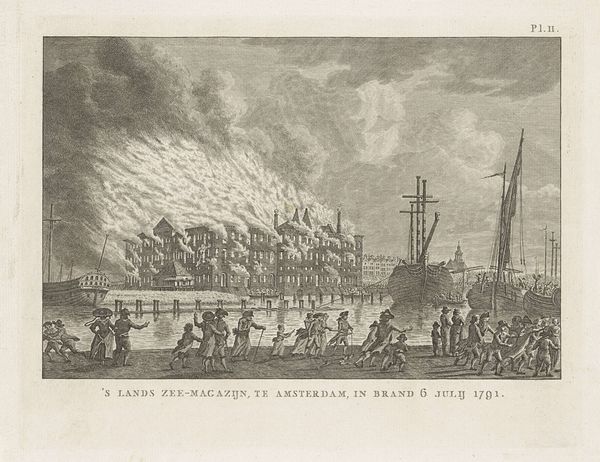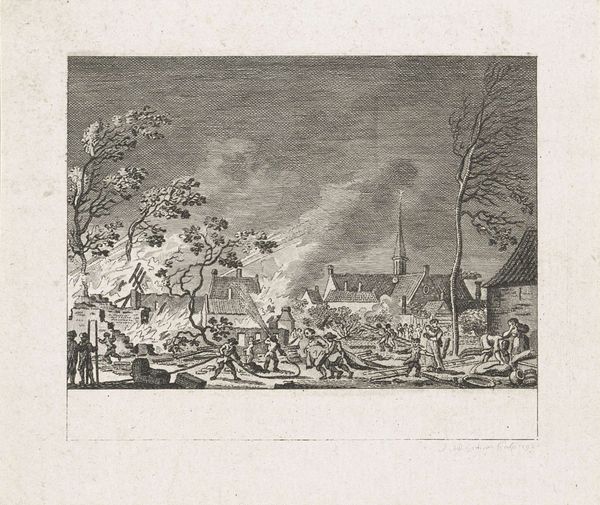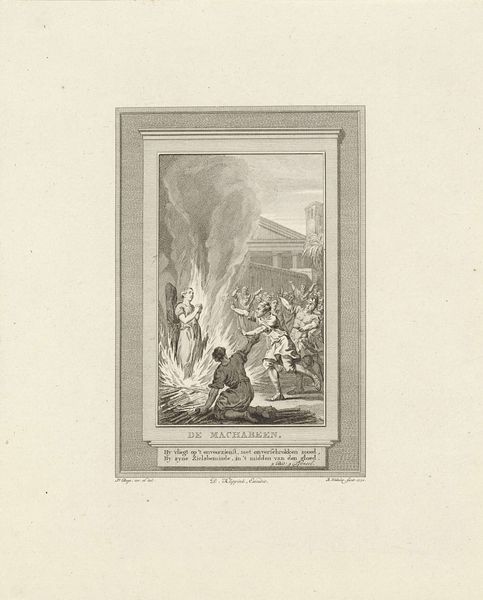
Dimensions: height 160 mm, width 100 mm
Copyright: Rijks Museum: Open Domain
Curator: "Zeeslag in De Hoofden, 1554," or "Naval Battle in the Heads, 1554," by Reinier Vinkeles, dates from around 1783-1795. It’s currently held at the Rijksmuseum. Editor: What a harrowing scene! The first thing I notice is the sheer chaos—burning ships looming in the background and smaller figures struggling in the water in the foreground. The mood is desperate, visceral, with this Baroque flair. Curator: Yes, that’s an apt assessment. Let's examine how Vinkeles achieves this drama. Note the dramatic diagonals established by the wreckage and figures, creating visual tension. The engraving technique, with its dense network of lines, intensifies the overall sense of turbulence and the violence implied in the event being depicted. Editor: It feels incredibly immediate. You can almost hear the sounds of battle amidst the lapping waves. But also, in a more whimsical sense, it looks like something Hieronymus Bosch might have dreamed up after a nasty seafood dinner. I mean that with affection, by the way. Curator: Perhaps. Though one should also observe the way that Baroque visual vocabulary is used, imbuing even the chaotic nature of this scene with structured grandeur, evident in the use of contrast. Consider too how the detail of the smaller characters juxtapose with these massive galleons, heightening both tension and the sublime quality so commonly linked with Romantic-era artworks. Editor: Right, those tiny folks really give the whole composition its emotional punch! I hadn't quite considered the sense of the sublime. The engraver made you think, as well as making you feel... I love when art does that, and am always amazed with prints on how much impact is conveyed through essentially black and white drawings. Curator: Precisely. The stark contrast inherent to engraving actually amplifies the drama of the subject. The absence of color allows the formal qualities—line, texture, and composition—to take center stage. Editor: Well, now I have a greater appreciation for naval battles and seafood dinners in equal measure. This piece is something of a hidden jewel, it seems, with this interplay between Romantic ideas and historical narrative in Baroque guise. I like it! Curator: I concur; an insightful consideration. Thank you.
Comments
No comments
Be the first to comment and join the conversation on the ultimate creative platform.
